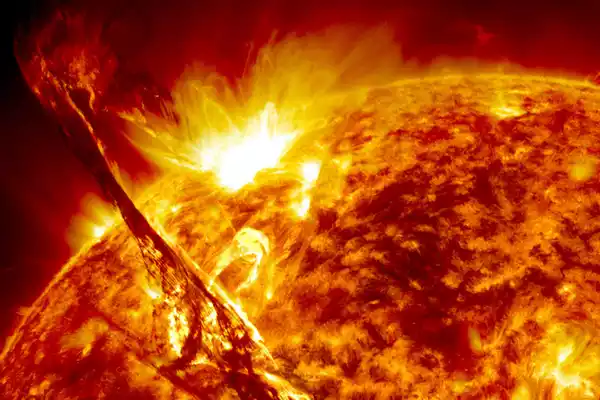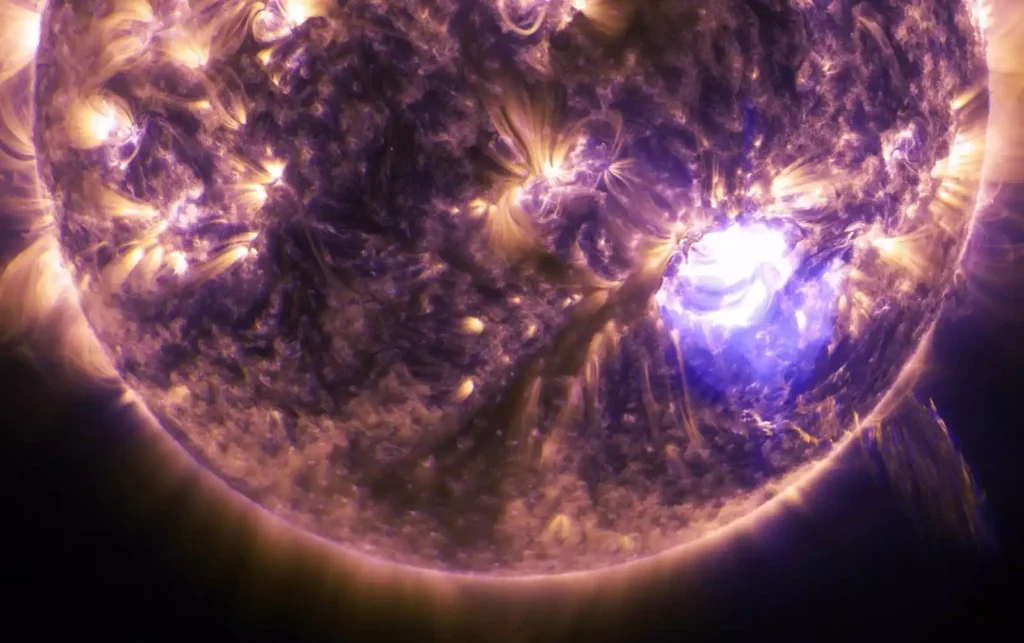NASA’s Solar Dynamics Observatory captured a powerful X5.0 solar flare.
About NASA’s Solar Dynamics Observatory (SDO):
- The SDO is a NASA mission launched in 2010, as part of the Living With a Star (LWS) program.
- The LWS program aims to develop scientific understanding of the Sun–Earth system, addressing aspects directly impacting life on Earth and its society.
- SDO’s primary goal is to understand the Sun’s influence on Earth and near-Earth space by studying the solar atmosphere in small scales of space and time and across multiple wavelengths.
- SDO has been investigating how the Sun’s magnetic field is generated and structured, how this stored magnetic energy is converted and released into the heliosphere and geospace in the form of solar wind, energetic particles, and variations in the solar irradiance.
- SDO is a three-axis stabilized spacecraft, with two solar arrays, and two high-gain antennas, in an inclined geosynchronous orbit around Earth.
Instruments:
- Helioseismic and Magnetic Imager (HMI): It studies solar variability and characterizes the Sun’s interior and the various components of magnetic activity.
- Extreme Ultraviolet Variability Experiment (EVE): It measures the Sun’s extreme ultraviolet irradiance with improved spectral resolution, “temporal cadence“, accuracy, and precision over preceding measurements made by TIMED SEE, SOHO, and SORCE XPS.
- Atmospheric Imaging Assembly (AIA): It provides continuous full-disk observations of the solar chromosphere and corona in seven extreme ultraviolet (EUV) channels, spanning a temperature range from approximately 20,000 Kelvin to in excess of 20 million Kelvin.
About X5.0 solar flare:
- Solar flares, like X5.0 event, release potent energy from the Sun’s surface, with implications for modern technology.
- X-class classification designates this flare as one of the most intense, with 5.0 indicating its strength.
- Solar flares like this one can influence radio communications, disrupt power grids, interfere with navigation signals, and pose risks to spacecraft and astronauts.
Ref: Source
| UPSC IAS Preparation Resources | |
| Current Affairs Analysis | Topperspedia |
| GS Shots | Simply Explained |
| Daily Flash Cards | Daily Quiz |



